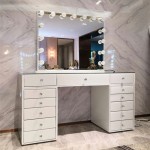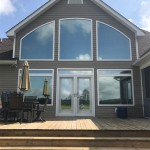Theatre Dressing Room Mirror Lights: Illumination for Performance Preparation
Theatre dressing room mirror lights are a crucial component of stagecraft and performer preparation. Proper illumination within the dressing room environment enables actors, dancers, and other performers to accurately apply makeup, style hair, and finalize costumes. Consequently, the quality and design of these lights directly impact the overall presentation and confidence of those taking the stage.
The requirements for dressing room lighting differ significantly from general ambient lighting. The goal is to create a focused, even light source that accurately represents the performer’s appearance under stage lights. This necessitates careful consideration of factors such as color temperature, light intensity, and the type of light fixture used.
A poorly lit dressing room can lead to inconsistencies in makeup application, resulting in a distorted appearance under the harsh glare of stage lights. Similarly, inadequate lighting can hinder the accurate assessment of costume fit and overall presentation, impacting the performer's confidence and the overall artistic coherence of the production.
Color Temperature and its Impact on Makeup Application
Color temperature, measured in Kelvin (K), describes the warmth or coolness of a light source. In the context of theatre dressing rooms, selecting the appropriate color temperature is paramount for accurate makeup application. A color temperature that is too warm (around 2700K-3000K) casts a yellow hue, potentially leading to an underapplication of foundation and blush. Conversely, a color temperature that is too cool (around 6000K-6500K) casts a blue hue, potentially resulting in overapplication of warm-toned makeup.
Ideally, theatre dressing room mirror lights should provide a neutral white light, typically ranging from 4000K to 5000K. This range closely mimics natural daylight, offering the most accurate representation of skin tones and makeup color. Using a neutral white light minimizes the risk of makeup appearing drastically different under stage lighting.
The consistency of color temperature across all dressing room mirrors is also essential. Variances in color temperature from one mirror to another can create discrepancies in makeup application among performers, leading to an uncoordinated appearance on stage. Therefore, it is important to ensure that all light fixtures used in the dressing rooms have the same color temperature rating.
Modern LED lighting offers significant advantages in maintaining consistent color temperature. Unlike traditional incandescent or fluorescent bulbs, LEDs are less prone to shifts in color temperature over time. Furthermore, high-quality LEDs are manufactured with tighter tolerances, ensuring greater uniformity in color temperature between individual bulbs.
Beyond the initial installation, regular maintenance and replacement of light fixtures are necessary to ensure the continued accuracy of color temperature. Over time, even LEDs can experience slight shifts in their color output, particularly if subjected to excessive heat or voltage fluctuations. A proactive maintenance schedule helps to identify and address these issues before they significantly impact makeup application.
Light Intensity and Distribution for Optimal Visibility
Light intensity, measured in lumens or lux, refers to the amount of light emitted by a light source. In theatre dressing rooms, sufficient light intensity is crucial for achieving clear and unobstructed visibility. However, simply increasing the intensity of the lights is not always the optimal solution. The distribution of light is equally important to prevent harsh shadows and glare.
The ideal arrangement for theatre dressing room mirror lights typically involves multiple light sources strategically positioned around the perimeter of the mirror. This approach provides even illumination across the face, minimizing shadows that can distort facial features. The classic Hollywood-style vanity mirror, with lights evenly spaced around the frame, exemplifies this principle.
The use of diffusers is another effective technique for improving light distribution. Diffusers soften the light, reducing harsh shadows and glare. They also help to create a more flattering and even illumination, making it easier for performers to accurately assess their appearance.
Adjustable light intensity controls are a valuable feature in theatre dressing rooms. These controls allow performers to customize the light level to suit their individual preferences and the specific requirements of the production. For example, a performer may prefer a lower light level when applying subtle makeup for a naturalistic scene, and a higher light level when applying more dramatic makeup for a stylized performance.
The background surrounding the mirror also plays a role in light distribution. A light-colored background reflects light, helping to brighten the overall environment and reduce contrast. A dark background, on the other hand, absorbs light, potentially creating a more shadowed and less flattering appearance.
Regular cleaning of light fixtures and mirrors is essential for maintaining optimal light intensity and distribution. Dust and grime can significantly reduce the amount of light emitted by the bulbs, as well as create unwanted reflections and glare on the mirror surface.
Types of Light Fixtures and Their Suitability for Dressing Rooms
Various types of light fixtures can be used in theatre dressing rooms, each with its own advantages and disadvantages. Traditional incandescent bulbs, while inexpensive, are energy inefficient and produce a warm, yellow light that is not ideal for accurate makeup application. Fluorescent bulbs are more energy efficient than incandescent bulbs, but they can flicker and produce a harsh, cool light that can distort color perception. Halogen bulbs offer a brighter, whiter light than incandescent bulbs, but they generate a significant amount of heat and have a relatively short lifespan.
LED lighting has emerged as the preferred choice for theatre dressing rooms due to its numerous benefits. LEDs are highly energy efficient, have a long lifespan, and produce a consistent, flicker-free light. High-quality LEDs are available in a wide range of color temperatures, allowing for precise control over the illumination. Furthermore, LEDs generate very little heat, making them a safer and more comfortable option for performers.
Strip lights are another popular option for theatre dressing room mirror lights. These lights consist of a series of small bulbs arranged in a linear fashion. Strip lights can be easily mounted around the perimeter of a mirror, providing even and consistent illumination. LED strip lights are particularly advantageous due to their energy efficiency and long lifespan.
Globe lights, reminiscent of classic Hollywood vanity mirrors, add a touch of elegance and provide excellent light distribution. These lights typically consist of spherical bulbs mounted around the mirror frame. The diffuse nature of the globe lights helps to minimize shadows and create a flattering illumination.
When selecting light fixtures for theatre dressing rooms, it is crucial to consider their durability and ease of maintenance. Theatrical environments can be demanding, and light fixtures may be subject to frequent use and occasional impacts. Therefore, it is important to choose fixtures that are robust and can withstand the rigors of theatrical production.
Dimmable fixtures are highly desirable, as they allow performers to adjust the light intensity to their individual needs. The dimming function also contributes to energy conservation, as lights can be dimmed when full illumination is not required.
The placement of the light fixtures is also a crucial consideration. The lights should be positioned so that they illuminate the face evenly, without casting harsh shadows. The height and angle of the lights should be adjusted to suit the individual performer's height and facial features.
In summary, selecting the appropriate type and arrangement of light fixtures is essential for creating a well-lit and functional theatre dressing room. LED lighting offers numerous advantages over traditional light sources, making it the preferred choice for most theatrical applications. Proper placement, dimming capabilities, and durable construction are all key factors to consider when choosing light fixtures for a theatre dressing room.

Dressing Room Lights Cole Lighting

Three Reasons Why Rosco Litepads Make Excellent Makeup Mirror Lights

The Experience Of Joy Broadway Lighted Mirror On Hayworth Vanity With Lights Dressing Room Hollywood

9 Theatre Mirrors Ideas Hollywood Mirror With Lights Illuminated

Ballet Theatre Mirror Cute For Morgan S Bathroom Dressing Room With Lights Glam

Ballet Theatre Mirror Option Dressing Room Hollywood Bulb

Theatre Style Dressing Room Mirror Light Bathroom Wall Lights Opal Glass Balls

Theatre Dressing Room Images Browse 6 425 Stock Photos Vectors And Adobe

Dressing Room Lights Cole Lighting

2008 April Dirty Martini Dressing Room Lights Craft Lighting








